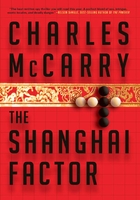Our relationship with bacon is complicated. We came of food-writing age just as America's favorite breakfast meat became a celebrity. This must have been a product of the Internet; imagine such a thing happening anytime before 2000. One day, bacon was America's modest, enduring breakfast meat, and then, suddenly, it was omnipresent. We don't need to recap the whole bacon explosion—not to be confused with the monstrosity that is the Bacon Explosion?, the protein's shark-jumping moment—with its bacon-covered apparel, bacon-themed memes, bacon-flavored, -scented and -infused everything, everywhere, in every store, on every menu. At some point, we got baconed out. We avoided dishes at restaurants because they contained bacon; we ceased wrapping our scallops and Thanksgiving turkeys in the stuff. We moved on to other cured and smoked meats: country ham, chorizo, 'nduja, etc.
But this over-adored, overexposed burnout wasn't bacon's fault. Bacon is a delicious preserved pork product—one of the few foods that deserves the word "delicious"—and it's one of the most generous ingredients we've met. When cooked, it surrenders up its sweet, porky fat, a gift that we can use again to cook something else or, hell, spread over a piece of bread like butter. It leaves behind rich, smoky, umami-flavored meat that really does "make everything better," as the T-shirts, mugs and so on say.
So we're here, bacon, with our backlash to the backlash. And we're not leaving you again. Just don't forget where you came from.
Bacon Jam–Crusted Sticky Ribs
MAKES 4 SERVINGS
Now here's some pig-on-pig-on-pig action: pork ribs braised in bacon fat and their own juices, then covered with bacon jam and broiled. This is definitely a Sunday recipe, but more due to total time than active labor, and you can always split up the project by making the bacon jam on its own (serving instruction: Spread. On. Everything.).
Buy the smokiest bacon you can find: Generally speaking, hickory-smoked bacon will be more pronounced than applewood-smoked, though double-smoked bacon, which you'll find at Polish butchers, is especially great in this recipe.
1 pound (455 g) sliced bacon, cut crosswise into ?-inch pieces
1 12-rib rack of St. Louis–style pork spare ribs (about 4 pounds/1.8 kg)
1 yellow onion, quartered
4 garlic cloves
? cup (55 g) packed brown sugar
? cup (60 ml) pure maple syrup
? cup (60 ml) apple cider vinegar
2 tablespoons tomato paste or ? cup (60 ml) ketchup
12 ounces (360 ml) non-hoppy beer
Preheat the oven to 225°F (110°C). In a large cast-iron skillet, cook the bacon over medium heat until crispy and well browned. Using a slotted spoon, transfer the bacon to paper towels to drain; leave the remaining fat in the pan.
Cut the rack of ribs in half and place the halves, meaty-side down, in the skillet. Cover with foil and bake in the oven for 3 hours, or until very tender and cooked through.
Make the bacon jam: Place the rendered bacon pieces, onion, garlic, brown sugar, maple syrup, cider vinegar and tomato paste in a food processor. Pulse until finely chopped. Transfer to a saucepan and add the beer. Bring to a boil, then lower the heat and simmer until reduced to a jammy consistency, about 45 minutes. Let cool.
When the ribs are cooked, uncover the pan and pour off any fat and juice (save this delicious cooking liquid for other uses if you like). Flip the ribs over so they're meaty-side up. Evenly spread the bacon jam over the top of the ribs and bake, uncovered, for 1 hour. Remove from the oven and let cool for 10 minutes.
Preheat the broiler. Broil the ribs until the top is bubbling and golden brown, 1 to 2 minutes. Let the ribs rest for 5 minutes before slicing and serving.
Pappardelle with Bacon & Root Vegetable Ragu
MAKES 4 TO 6 SERVINGS
We love the combination of smoky bacon and sweet, earthy root vegetables, especially parsnips and celery root. When simmered, bacon gives up most of its flavor to the cooking liquid, and the meat left behind is more porky than bacon-y. To avoid this and keep the flavor focused, we pull the bacon from the pan while it's still crisp and use the rendered fat to sauté the vegetables for the sauce, then add the bacon bits to the finished dish as a crunchy garnish.
1 pound (455 g) thick-cut bacon slices, cut crosswise into ?-inch pieces
1 large onion, diced
3 garlic cloves, thinly sliced
1 8-ounce (225-g) piece celery root, peeled and cut into ?-inch dice
8 ounces (225 g) carrots (about 4 medium), peeled and cut into ?-inch dice
8 ounces (225 g) parsnips (about 2 medium), peeled and cut into ?-inch dice
1 sprig rosemary
1 sprig thyme
? cup (60 ml) tomato paste
? cup (120 ml) dry white wine
1 cup (240 ml) chicken stock or low-sodium broth
12 ounces (340 g) pappardelle pasta
Salt and freshly ground black pepper
Freshly grated Parmigiano-Reggiano cheese, for serving
In a large heavy saucepan, cook the bacon over medium heat, stirring frequently, until most of the fat has rendered, about 15 minutes. Increase the heat to medium-high and cook until the bacon is lightly browned and crisp, 3 to 5 minutes. Using a slotted spoon, transfer the bacon to a paper towel–lined plate to drain.
Pour out all but about 3 tablespoons of the bacon fat (reserve the rest for another use). Add the onion, garlic, celery root, carrots and parsnips to the pan and cook over medium heat, stirring to loosen as many browned bits from the bottom of the pan as possible, until the onion is softened, about 6 minutes. Add the rosemary and thyme and cook until fragrant, about 1 minute. Add the tomato paste and cook until it coats the vegetables and glazes the bottom of the pan, about 2 minutes.
Add the wine and simmer, stirring to loosen the browned bits from the bottom of the pan, until reduced by half, about 2 minutes. Add the stock and bring to a boil, then reduce the heat to medium-low, cover the pan and simmer until the vegetables are tender, about 15 minutes.
Meanwhile, bring a pot of salted water to a boil and cook the pappardelle until al dente. Reserve at least 1 cup (240 ml) of the cooking water, then drain the pasta.
Discard the herb sprigs from the sauce and stir in half of the bacon. Season with salt and pepper. Add the pasta and some of the cooking water and toss until the sauce coats the pasta, adding more cooking water as necessary.
Transfer the pasta and ragu to bowls, garnish with the remaining bacon and the cheese and serve.
Cider-Braised Bacon
MAKES 4 TO 6 SERVINGS
We sometimes forget that before bacon is sliced, it's just a slab of meat. It takes to a braise as well as anything else, and does more to flavor its cooking liquid than other cuts (making it all the better for reducing it into a pan sauce). The step of reducing the cooking liquid is vital: We've tried this dish both with and without the thickened sauce, and it's well worth the extra reduction. The extra effort will elevate the dish from bacon to BACON!!!
1 1?-pound (680-g) piece slab bacon
3 cups (720 ml) apple cider
? cup (60 ml) apple cider vinegar
? cup (60 ml) honey (clover, apple or orange blossom honey work especially well)
1 bay leaf
1 tablespoon whole black peppercorns
Preheat the oven to 325°F (165°C). In a Dutch oven or baking dish, combine the bacon, apple cider, vinegar, honey, bay leaf and peppercorns. Cover the dish tightly with a lid or aluminum foil and place in the oven. Braise for 1 hour; turn the bacon over, recover and continue to braise for 1 hour longer. Remove the Dutch oven from the oven and let the bacon cool, uncovered, in the liquid for 1 hour.
Transfer the cooled bacon to a cutting board and cut into ?- to ?-inch-thick slices. Strain the braising liquid through a fine-mesh sieve into a saucepan. Bring to a boil over medium-high heat and cook until the liquid is reduced to about ? cup (120 ml), 18 to 20 minutes. Heat a skillet over medium-high heat and fry the bacon slices, turning once, until they're browned and caramelized all over, 2 to 3 minutes a side. Add the reduced sauce, tilt the pan to coat the bacon slices and serve.
Leftovers?
Rebekah Peppler (Vol. 8: Honey), who created this recipe, suggests re-crisping leftover slices of bacon and using them in BLTs (or BLATs, or whatever acronym-based sandwiches you're into). We couldn't agree more with her.
Dark Chocolate Chunk–Bacon Cookies
MAKES 5 TO 6 DOZEN
We love this recipe from Beth Lipton (Vol. 16: Peaches) because it brings together two beloved-but-pedestrian things—bacon and chocolate chip cookies—and breathes a little new life into both. It's also a tidy lesson on using bacon fat in baking: You can swap it in for some of the butter, shortening or, of course, lard, as long as the total amount of fat remains the same. In these cookies, bacon fat accounts for about a third of the total fat, which is plenty to give the cookies a sweet-smoky flavor but without bacon stealing the show (which happens all too often when adding bacon to sweets). This is a good occasion to use a less-intense applewood-smoked bacon.
8 ounces (225 g) thick-cut bacon (about 4 slices), cut into ?-inch pieces
2? cups (280 g) all-purpose flour
1 teaspoon baking soda
? teaspoon salt
11 tablespoons (155 g) unsalted butter, at room temperature
? cup (150 g) granulated sugar
? cup (165 g) packed dark brown sugar
2 large eggs
2 teaspoons pure vanilla extract
10 ounces (280 g) dark chocolate (at least 70% cacao), chopped into ?-inch pieces
Place a fine-mesh sieve over a bowl. In a large skillet, cook the bacon over medium heat, stirring occasionally, about 10 minutes. Pour the contents of the skillet into the sieve, collecting the fat in the bowl. Refrigerate the fat until it's firm, at least 20 minutes. If you want smaller pieces of bacon in your cookies, chop it again (you should have about ? cup/115 g); place the bacon in a bowl and set aside.
In a small bowl, whisk together the flour, baking soda and salt. Using a tablespoon measure, spoon 5 tablespoons (75 ml) of the bacon fat into the bowl of a stand mixer fitted with the paddle attachment (if you don't have 5 tablespoons/75 ml of fat, you can make up the difference with more butter as long as you use a total of 1 cup/240 ml of fat). Add the butter and both sugars and mix at medium-high speed until light and fluffy, about 3 minutes. Add the eggs, one at a time, mixing well after each addition. Beat in the vanilla. Scrape down the side of the bowl with a spatula.
Turn the mixer speed to low and beat in the flour mixture until just combined. Using a wooden spoon, stir in the chocolate and reserved bacon pieces. Form the dough into a ball, wrap in plastic and refrigerate for at least 1 and up to 12 hours.
Place racks on the top and bottom thirds of the oven and preheat to 375°F (190°C). Line two large baking sheets with parchment paper or silicone baking mats. Using a tablespoon, portion the dough into individual balls. Arrange the dough balls on the baking sheets about 2 inches (5 cm) apart. Bake for 10 to 12 minutes, until golden and firm, rotating the baking sheets from top to bottom and front to back halfway through.
Transfer the baking sheets to wire racks and let cool for 5 minutes, then transfer the cookies to the racks and let cool completely. Repeat with the remaining dough. (You can also portion the dough into balls and freeze them for up to 1 month. Bake the cookie dough from its frozen state; it may need an extra minute or two and the cookies will not spread as much.)
Cured vs. "Uncured" Bacon
When shopping for bacon, you've probably noticed that some packages contain "uncured" bacon. This is a misnomer: All of the "uncured" bacon we've encountered has actually been cured, though without the use of sodium nitrate (saltpeter) or sodium nitrite (pink salt), two compounds commonly used in meat preservation. Because these additives have been linked to bad side effects, some folks avoid meats cured with them. Instead, manufacturers use celery salt or extra sea salt to make up the difference. For this reason, you can usually spot "uncured" bacon by its grayish color. It will probably also be saltier than cured bacon, so back off on your seasoning a bit when cooking with it.
Smoky Whipped Bacon Fat
MAKES ABOUT 1? CUPS (360 ML)
This recipe takes a brunch byproduct and makes it a star. If you're not saving every drop of leftover fat when you cook bacon, perhaps this smoky spread will convince you to do so. At first it sounds insane to eat whipped bacon fat, but it's a sign of how intimate we've become with this ingredient.
Use this as a butter alternative for spreading on breads and rolls, or serve a small bowl of it with radishes and other raw vegetables for dipping.
1 cup (240 ml) cold rendered bacon fat
1 small shallot, finely grated
1 teaspoon finely grated lemon zest
1 tablespoon fresh lemon juice
1 teaspoon smoked paprika
2 tablespoons finely chopped cilantro
Fine sea salt and freshly ground black pepper
Place the fat, shallot, zest, juice, paprika, cilantro, 1? teaspoons of salt and ? teaspoon of pepper in the bowl of a stand mixer fitted with a whisk attachment (or use a bowl and a handheld electric mixer). Beat the fat until fluffy, about 3 minutes. Season with salt and pepper to taste and serve. Refrigerate the fat in an airtight container or jar for up to 1 week.
Saving Bacon Fat
As easy as it sounds, there are a couple of things to remember when storing leftover bacon fat. First, strain the fat through a fine-mesh sieve to remove any solids. Save your fat in a glass container (hot fat can melt plastic, and grease-coated plastic is tough to clean) and store it in the refrigerator. Discard unused fat after a month or two; you'll be able to smell it if it begins to go rancid. You can also freeze bacon fat; it should keep for several months, if not longer.
Bacon-Fried Steaks with Pan Gravy
MAKES 2 SERVINGS
Country-fried (or chicken-fried) steak—the American South's answer to Wiener schnitzel—has always been as welcome on the breakfast table as it is at dinner, and the addition of bacon and gravy make it even more so. But we've broken a couple of rules: First, CFS is traditionally made with a tough, cheap cut of beef that's been beaten to mush with a meat tenderizer. You could certainly follow suit, but we prefer the sirloin tip, which is lean, tender and still inexpensive compared to other steak cuts. (You might also see sirloin tip sold under its less-appealing moniker, "flap meat.")
Second, we've put bacon all over this thing: ground bacon in the crust and bacon fat in the cooking oil and gravy. And if you have any leftover slices of uncooked bacon handy when you've finished cooking the steaks, you can batter and fry those, too.
FOR THE STEAKS:
8 to 10 strips (8 ounces/225 g) thinly sliced bacon
1 cup (125 g) all-purpose flour
? teaspoon baking powder
1 teaspoon kosher salt
1 teaspoon freshly ground black pepper
? teaspoon cayenne pepper
? cup (30 g) cornstarch 1 large egg
? cup (165 ml) buttermilk, well shaken 2 8-ounce (225-g) sirloin tip steaks (about ? inch thick)
Peanut or vegetable oil, for frying
FOR THE GRAVY:
2 tablespoons all-purpose flour 1 cup (240 ml) warm whole milk
Kosher salt and freshly ground black pepper
Tabasco hot sauce (optional)
Make the steaks: Preheat the oven to 375°F (190°C) and place a wire rack in a rimmed baking sheet. Arrange the bacon slices on top of the rack and bake, turning the bacon over once or twice, until very crisp, about 30 minutes. Carefully pour the fat from the pan into a measuring cup and reserve. Transfer the bacon to a cutting board and chop it very finely; you should have about ? cup (115 g).
In a shallow bowl, whisk together the flour, baking powder, salt, pepper and cayenne pepper. Add the bacon pieces and work them into the flour with your hands; the flour should dampen slightly and the bacon should be completely coated. Place the cornstarch in a separate shallow bowl. In a third shallow bowl, beat the egg, then beat in the buttermilk.
Place the steaks on a cutting board and pound them with a meat hammer or some other heavy object until about they're ? to ? inch thick. Season with salt and pepper. Dredge one of the steaks in the cornstarch until coated, then shake off any excess. Slide the steak into the egg mixture and turn to coat well. Lift the steak and let any excess egg drip off, then dredge in the bacon-flour mixture, pressing it into the steak until completely coated. Transfer the meat to a wire rack and repeat with the remaining steak.
In a large cast-iron or nonstick skillet, heat 1 inch of oil and all but 2 tablespoons of the bacon fat until it reaches 375°F (190°C) on a deep-fry thermometer. Carefully slide one of the steaks into the oil and cook, turning once, until browned and crisp on both sides, 2 to 3 minutes per side. Transfer the meat to a plate and repeat with the other steak.
Make the gravy: Pour out all of the frying oil and add the remaining 2 tablespoons of bacon fat; place the skillet over medium-high heat. Add the flour and cook, whisking constantly, until it turns light brown, 1 to 2 minutes. Slowly add the milk, whisking constantly. Bring the milk to a boil, then simmer until thickened to a gravy-like consistency, about 5 minutes. Remove the gravy from the heat and season to taste with salt, lots of pepper and Tabasco sauce, if using.
Transfer the steaks to plates, spoon some of the gravy over the top and serve.
Bacon-Chile Relish
MAKES ABOUT 1 CUP (240 ML)
This relish is loosely based on nam prik pao, a Thai condiment made with fried or roasted chiles and dried shrimp. In Thailand, this sweet-salty-tangy-funky relish is often served with tom yum (a hot-and-sour soup) and stir-fries or as a snack-like dip for pork rinds. It was actually this last application that gave us the idea for substituting crispy bacon for the shrimp. You end up with two condiments in one, really: a crunchy paste and a gently spicy chile oil. (If you really love heat, make this with the Salted Chiles on this page or a spicier jarred pepper.)
The relish also contains two Thai pantry staples that have become indispensable in our own kitchen: fried garlic and shallots. These thinly sliced alliums have been fried into a feathery crispiness and lend a desirable crunch. If you can't find them at an Asian market or in the (potentially xenophobic) "ethnic" or "international" section of your supermarket, they're easy to make at home: Fry paper-thin slices in 365°F (185°C) oil for a couple of minutes. But these are two ingredients—like ketchup or Oreos—where store-bought is actually better.
5 slices bacon (not thick cut)
? cup (75 g) jarred pickled red chiles in oil (we love Mama Lil's brand or Peppadew)
2 tablespoons chile oil from the jar
1 tablespoon fried garlic (available at Asian markets)
1 tablespoon fried shallots (available at Asian markets)
1 tablespoon palm sugar or light brown sugar
1 tablespoon Asian fish sauce, or more to taste
1 tablespoon fresh lime juice, or more to taste
Preheat the oven to 300°F (150°C) and place a wire rack in a rimmed baking sheet. Arrange the bacon on the rack and bake, turning once or twice, until dark brown (but not burnt) and crispy, about 1 hour. Transfer the bacon to paper towels and blot away any excess fat. Let cool completely, then chop very finely; you should be left with a coarse meal. Transfer to a small bowl.
Finely chop the pickled chiles, then add them to the bacon along with the chile oil, fried garlic and shallots. In a separate small bowl, whisk together the sugar, fish sauce and lime juice until the sugar has dissolved. Pour this mixture into the bacon-chile mixture and stir well with a fork to break up the garlic and shallots. Season to taste with more fish sauce and/or lime juice. Refrigerate in an airtight container or jar until ready to use, up to 1 week.
Dirty Devils
MAKES 3 DOZEN
Long before the Internet wrapped everything from tacos to hot dogs in bacon, the most common gifts befitting this meaty wrapping paper were chicken livers, known as rumaki, and dates, aka devils on horseback. This recipe combines these two trailblazers in one rich, savory bite. Deglet dates are a bit smaller and less sticky than Medjool dates, which make them easier to wrap tightly—but either will work fine.
? pound (225 g) organic chicken livers
1 cup (240 ml) whole milk
4 tablespoons (? stick/55 g) butter, divided
1 tablespoon canola oil
2 thyme sprigs, plus 1 teaspoon leaves for garnish
2 garlic cloves
1 tablespoon honey
Salt and freshly ground black pepper
12 slices thin-cut bacon
36 pitted Deglet dates
Combine the chicken livers and milk in a small bowl, cover, and refrigerate overnight. Strain and rinse the chicken livers, then pat dry.
In a medium skillet, melt 1 tablespoon of butter in the canola oil over medium heat. Add the thyme sprigs and garlic and cook until fragrant, about 1 minute. Add the chicken livers and cook, turning occasionally, until browned all over but still pink in the center, about 6 minutes total. Transfer the contents of the pan to a bowl and refrigerate for 1 hour.
Transfer the liver mixture to a food processor. Add the honey and process until the mixture forms a thick paste. Cut the remaining 3 tablespoons of butter into small cubes and, with the machine running, add the cubes one at a time, waiting until each one is completely incorporated before adding more. Season to taste with salt and pepper. Cover and place the filling in the refrigerator for 30 minutes.
Preheat the oven to 400°F (205°C) and place a wire rack in a rimmed baking sheet. When the liver mixture is cool, place in a quart-size (960-ml) plastic bag and seal. Snip one corner of the bag to form a small opening and set aside. Cut each slice of bacon into 3 equal pieces.
On a clean work surface, cut each date lengthwise along one side. Pipe just enough liver puree inside each date to fill it without overstuffing, then tightly roll 1 piece of bacon around the date so that it is completely wrapped. Place it seam-side down on the prepared baking sheet. Repeat with the remaining dates.
Roast the dates for 15 to 18 minutes, or until the bacon is golden brown and crispy. Let cool slightly, then garnish with thyme leaves and serve.














